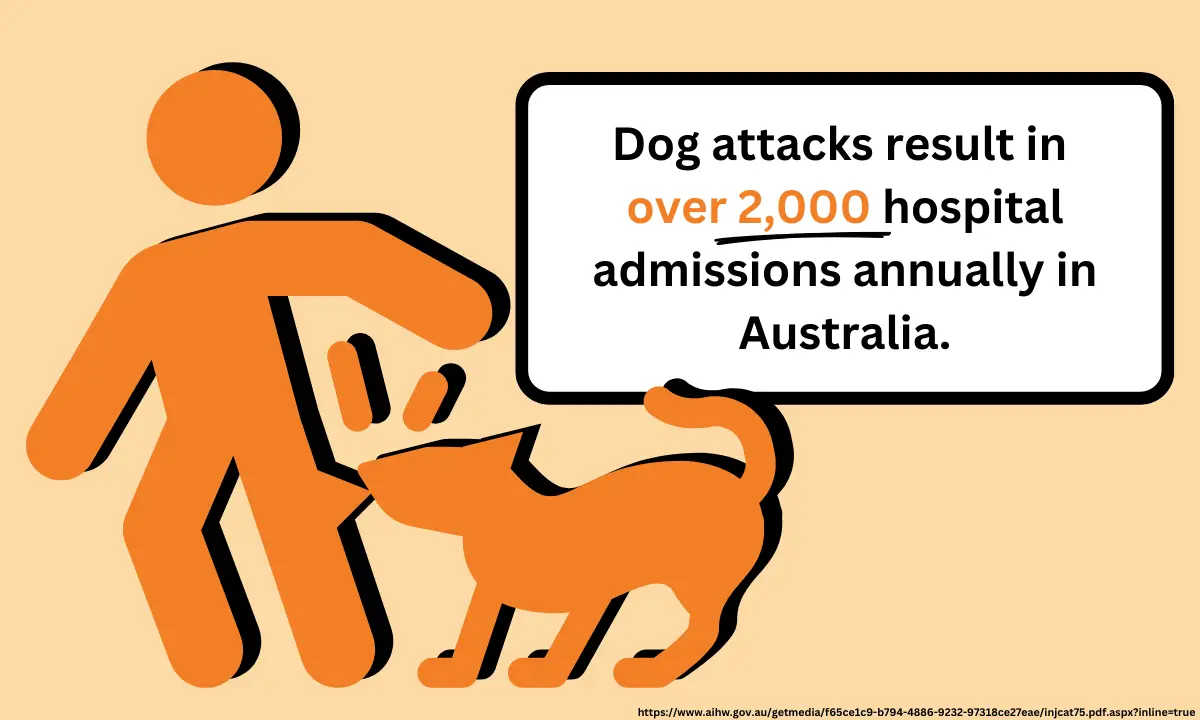Being rear ended by a car, especially while stopped at a red light or in traffic, can be a sudden and stressful experience. One moment you’re stationary, the next your vehicle is jolted by a loud, unexpected impact. These rear end collisions are among the most common car accidents on Australian roads and are often caused by distracted, speeding, or inattentive drivers.
If your car was rear ended, even in what seems like a minor crash, it’s important to understand your legal rights. Whether you’ve sustained injuries or vehicle damage, knowing what to do after a rear ended car accident can significantly impact your recovery, insurance outcome, and compensation claim.
In this guide, our experienced rear end collision lawyers at Withstand Lawyers walk you through every step, from identifying who’s at fault, to dealing with CTP insurance, and pursuing fair compensation. If you’ve been rear ended while stopped, this blog is your trusted resource for navigating the legal process with confidence.

Understanding Rear-End Collisions
What Constitutes a Rear-End Collision?
A rear-end collision occurs when one vehicle crashes into the back of another. It might sound straightforward, but the legal implications and underlying causes can be complex. Most commonly, a rear-end accident happens when the front vehicle is stopped or slowing down, and the vehicle behind fails to brake in time. These incidents often occur in high-traffic areas, at intersections, or in sudden stop situations, places where being rear ended while stopped is all too frequent.
But not every rear-end crash is a minor one. In many cases, being rear ended by a car can lead to serious injuries like whiplash, spinal damage, or psychological trauma. Whether it’s a high-speed highway collision or a low-speed bump in a car park, the moment your car is rear ended, it sets off a chain of events that can affect your health, finances, and legal standing.
Understanding exactly what happened and how the accident unfolded is key to determining fault and securing compensation, especially when rear end collision lawyers are involved to support your claim.
Common Causes of Rear-End Accidents
Rear-end accidents don’t just happen, they’re usually the result of avoidable driver behaviour. Some of the most common causes include:
Distracted Driving: Texting, using a mobile phone, eating, or even adjusting the radio can take a driver’s eyes off the road for crucial seconds. Just a moment of distraction is all it takes to cause a car rear end collision.
Tailgating: Following too closely reduces the reaction time a driver has if the car in front slows down or stops. Many cases of a car rear ended involve drivers who were simply too close to the vehicle ahead.
Sudden Stops: While the front driver may brake unexpectedly for good reason, a rear-end collision still often follows. That’s why keeping a safe distance is not just good practice, it’s a legal responsibility.
Speeding or Driving Too Fast for Conditions: High speeds reduce the time and space needed to react. When weather, traffic, or road conditions are poor, the chances of an accident where you’re rear ended increase significantly.
Fatigue or Impaired Driving: Drowsy or drunk drivers have slower reflexes and are less likely to react in time to avoid a crash, making them frequent culprits in rear ended car accidents.
Understanding what caused your accident is the first step in proving fault and claiming the compensation you’re entitled to. That’s why having an experienced rear end collision lawyer on your side is so important.
At Withstand Lawyers, our dedicated team knows how to investigate your case thoroughly and build the strongest possible claim. Contact us today for a free claim assessment. We work on a No Win, No Fee basis, so you can focus on your recovery while we handle the legal side.
Determining Fault in Rear-End Collisions
Determining who is at fault in a rear-end collision is a critical step in the claims process, as it directly influences your eligibility for compensation and the types of benefits you can access. Establishing fault can affect whether you’re entitled to statutory benefits only, or if you can also make a lump sum compensation claim for pain and suffering and future economic loss. The clearer the fault, the stronger your position when it comes to seeking the full range of compensation available after a car accident.
Is the Rear Driver Always at Fault?
In most cases, the rear driver is presumed to be at fault in a rear-end collision. This is based on the basic road rule that all drivers must maintain a safe following distance and be prepared to stop safely. So if your car was rear ended while stopped, it’s usually clear that the driver behind wasn’t paying attention or didn’t leave enough space.
This assumption is common in car rear end collision claims, especially when the front vehicle was legally stopped at a red light, pedestrian crossing, or in heavy traffic. Insurance companies, police, and courts often default to holding the rear driver liable in these cases.
However, like many things in law, there are exceptions. While it may seem straightforward when you’re rear ended by a car, the circumstances surrounding the crash can shift the legal perspective. That’s why having experienced rear end collision lawyers review the evidence is essential for a fair outcome.
Am I at Fault If I Rear Ended Another Car?
If you’ve rear ended another car, it’s usually assumed that you’re at fault. However, no two accidents are the same, and it’s important not to admit liability without first seeking legal advice. In some cases, you may not be fully responsible, and this can have a big impact on your legal rights and the compensation you may be entitled to claim.
When the Lead Driver May Be At Fault For A Rear End Collision
Although uncommon, there are situations where the lead driver can be partially or fully at fault for a rear end accident. These include:
Abrupt or Unnecessary Braking: If the lead driver suddenly slams on the brakes without a valid reason, like reacting to a non-existent hazard or “brake checking” another driver, liability may be shared or even shifted.
Reversing Unexpectedly: A lead vehicle that suddenly reverses into the car behind may be held fully liable. This can happen in tight parking situations, or if a driver panics and shifts into reverse at a traffic light.
Malfunctioning or Non-Working Brake Lights: If the lead car’s brake lights aren’t working, the rear driver may not be able to anticipate a stop. In these cases, the rear driver could argue they had no reasonable warning, especially relevant in rear ended car claims where visibility or signalling is a factor.
Swerving or Cutting In Abruptly: If a vehicle merges into a lane suddenly and brakes, leaving the car behind no time to react, fault may be contested.
Every rear ended accident is different, and determining fault isn’t always black and white. That’s why it’s vital to gather clear evidence, like photos, witness statements, dash cam footage and seek legal advice.
At Withstand Lawyers, our rear end collision lawyers carefully investigate each case to ensure liability is assigned fairly and our clients receive the compensation they deserve. Contact us today for a no-obligation, free claim assessment so you know where you stand after a rear ended collision.

Legal Rights and Compensation for Victims of a Rear End Car Crash
If your car was rear ended, you may be entitled to compensation under NSW law, regardless of whether the accident seemed minor or severe. Even a seemingly low-impact car rear end collision can cause long-term physical and emotional injuries. That’s why it’s crucial to understand exactly what you can claim for after being rear ended by a car.
The following entitlements may be claimed after a rear ended accident:
✅ Medical Expenses: This includes immediate treatment, hospital visits, physiotherapy, rehabilitation, medications, and any long-term medical support related to injuries sustained in the crash.
✅ Lost Income: If your injuries prevent you from workin, temporarily or permanentl, you may be eligible to claim for loss of earnings and reduced future earning capacity.
✅ Domestic Assistance: If you need help with daily activities (like cleaning or cooking) because of your injuries, you may be entitled to support or reimbursement for paid services.
✅ Pain and Suffering: Also known as non-economic loss, this compensates you for the physical pain and emotional distress resulting from the accident. It’s especially relevant in cases of serious injury, psychological trauma, or chronic pain caused by the rear end accident.
Our experienced car accident lawyers are here to help you understand exactly what you’re eligible for and guide you through every step of the legal process. Contact our rear end collision lawyers today for a free claim assessment to ensure you’re not undercompensated or unfairly denied benefits you may be entitled to.
The Role of Compulsory Third Party (CTP) Insurance in NSW
In New South Wales, Compulsory Third Party (CTP) insurance, also known as green slip insurance, is mandatory for all registered vehicles. This insurance covers compensation for people injured in motor vehicle accidents, including rear ended car accidents.
If you’ve been rear ended while stopped, and the at-fault driver is identified, you can make a CTP claim against their insurer to recover costs related to your injuries. Even if fault isn’t fully clear or the other driver disputes liability, you may still be eligible for support through the CTP scheme.
Here’s how CTP insurance typically applies to rear end collisions:
You can claim medical treatment, income support, and care services for 12 months regardless of fault.
If the other driver is at fault, you may be entitled to long-term compensation.
Lodging a CTP claim must be done within strict timeframes, and the process can be complex. Our expert rear end collision lawyers at Withstand Lawyers can assist you in lodging your claim correctly, negotiating with insurers, and claiming the full compensation you deserve. Contact us today for a free claim assessment and we’ll support you every step of the way on a No Win No Fee basis
How Much Compensation Can I Receive After Being Rear-Ended in a Car Accident?
The amount of compensation you may be entitled to after a rear-end accident in NSW depends on several factors, including the severity of your injuries, how the accident has impacted your ability to work, and whether another party was at fault.
In most rear-end collisions, the rear driver is considered at fault, meaning you could be eligible for both statutory benefits and possibly a lump sum compensation.
Statutory Benefits (No-Fault Entitlements) After a Rear Ended Accident
Immediately after the accident, you may be able to access:
Weekly income support – if you need time off work as a result of the accident
Medical and rehabilitation costs – like GP visits, physiotherapy, scans, surgery, or counselling
Domestic assistance – if you need help at home because of your injuries sustained in the accident
These benefits are generally available for up to 12 months if you are not mostly at fault, but they can extend beyond that if your injuries are classified as non-threshold (fractures, tears, nerve damage, PTSD etc).
Lump Sum Compensation After Being Rear Ended
If your injuries from a rear-end accident are classified as non-threshold and the other driver was at fault, you may be eligible for a lump sum compensation payment. This is separate from your statutory benefits and can cover:
- Pain and suffering – for the physical and emotional impact of your injuries
- Past and future economic loss –if your ability to work and earn income has been affected
To claim compensation for pain and suffering, your injuries must be assessed at a Whole Person Impairment (WPI) of more than 10% by a qualified medical assessor. The higher your WPI rating, the greater the potential payout—especially if your injuries result in long-term disability or a reduced capacity to work. While exact amounts vary, serious rear-end collision injuries that meet the WPI threshold can result in lump sum payouts worth hundreds of thousands of dollars, depending on the extent of the impact on your life and earning potential.
In 2024, the State Insurance Regulatory Authority (SIRA) reported 14,261 motor accident injury claims in New South Wales, with total compensation payouts amounting to $1,612.4M. This equates to an average compensation of approximately $113,000 per claim, however your claim may be worth more.
Click here to see what others have received for pain and suffering after a car accident.
Brad, a 35-year-old father of two from Western Sydney, was heading home after a long day on the tools when his ute was rear-ended at a red light by a distracted driver. At first, it felt like a minor incident—just a jolt and a bit of car damage. But within days, Brad developed persistent neck and lower back pain that wouldn’t go away. His GP diagnosed him with whiplash, a tear in his shoulder and a lumbar disc injury, and he was soon referred for ongoing physiotherapy and pain management.
As a tradie, Brad relied on his body to earn a living, but now even simple tasks were a struggle. He was forced to take extended time off work, and when he finally returned, he could only manage light duties. That meant fewer hours and less pay, putting real financial pressure on his family.
Unsure of what steps to take, Brad reached out to Withstand Lawyers for a free claim assessment. The team explained his rights, helped him navigate the claims process, and promptly lodged a statutory benefits claim, which covered his medical expenses and part of his lost income. But his injuries continued to impact his life, and following a formal medical assessment, Brad was given a Whole Person Impairment (WPI) rating of 13% making him eligible to pursue a lump sum compensation claim.
With Withstand Lawyers by his side, Brad successfully secured a $400,000 lump sum payout, covering both pain and suffering and past and future economic loss. The compensation allowed him to support his family, reduce financial stress, and retrain for a less physically demanding role.
Brad’s story is a powerful reminder that even accidents that seem “minor” can have lasting consequences, and that knowing your rights, and having the right legal team behind you, can make all the difference.

Steps to Take After Being Rear-Ended
Knowing what to do immediately after your car is rear ended can make a significant difference in protecting your health, legal rights, and your ability to claim compensation. Whether it’s a minor bump or a serious car rear end collision, taking the right steps can strengthen your case and ensure you’re covered under NSW’s personal injury laws.
Here’s what you should do if you’ve been rear ended by a car:
If possible, move your vehicle to a safe location out of traffic. Check yourself and others for injuries, even if they seem minor. Some symptoms, like whiplash, may appear hours or days later. Call emergency services if anyone is injured or if there’s significant damage.
Exchange contact, licence, registration, and insurance information with the other driver. If there are any witnesses, get their details too. Accurate information is crucial for filing a CTP claim after being rear ended while stopped.
Take clear photos of all vehicles involved, number plates, road conditions, traffic signs, and visible injuries. These images can support your claim and help determine fault in a rear ended car accident.
In NSW, you’re required to report accidents that involve injury or significant property damage. Contact the police to report the accident and request an event number. This report may be needed when claiming through CTP insurance.
Even if you feel okay, see a doctor as soon as possible. Explain you were rear ended in a car accident and request a full examination. Medical records provide essential evidence for your compensation claim.
Inform your own insurance company about the incident. However, avoid making formal statements or accepting liability without legal advice.
The most important step? Speak with experienced rear end collision lawyers. At Withstand Lawyers, we help you understand your rights, lodge your CTP claim correctly, and negotiate with insurers to secure the maximum compensation you’re entitled to – all on a No Win No Fee basis, so you never pay out of pocket to make a claim.
Can I Make a Claim After a Rear Ended Accident If the At-Fault Driver Is Uninsured?
Yes, you can still make a claim, even if the driver who rear ended your car is uninsured or cannot be identified. In NSW, you’re protected under the Compulsory Third Party (CTP) insurance scheme, which includes a special provision called the Nominal Defendant.
The Nominal Defendant acts as a safety net when:
The at-fault driver is uninsured
The at-fault vehicle is unregistered
The driver fled the scene and cannot be identified
This means you can still receive medical treatment, income support, and compensation for injuries suffered in a rear end collision, even if the responsible driver doesn’t have insurance.
To qualify, you must report the accident to police within 28 days and lodge an Application for Personal Injury Benefits within 3 months. The sooner you act, the better your chances of a successful claim, especially in rear ended car accidents involving uninsured or hit-and-run drivers.
Click here to learn more about the Nominal Defendant and how it may apply to your claim.
Can’t Return to Work After a Rear-End Accident? Consider Making a Total and Permanent Disability (TPD) Claim
If it’s unlikely that you’ll be able to return to work due to your rear end accident, consider making a Total Permanent Disability (TPD) claim.
Rear end motor vehicle accidents often seem minor at first, but the long term impact can be serious. Injuries such as spinal damage, whiplash or persistent pain can make it difficult or impossible to return to work. In those situations, a TPD claim may provide much-needed financial support.
You may be entitled to a lump sum through your superannuation if you are unable to return to work in jobs you’ve worked in before or qualified to do. This is separate from a CTP or workers compensation claim. You do not need to prove fault.
TPD claim amounts typically range from $50,000 to $350,000 and are separate from your superannuation account balance.
We offer a free claim check where we investigate, on your behalf, whether you held TPD insurance at the relevant dates – usually when you last worked. Within 4 to 6 weeks, our TPD lawyers will tell you how much you can claim, which is often the full insured amount.
Only after this step do we send you a No Win No Fee cost agreement. While our legal fees are capped and transparent, we often provide an estimate based on the value of your potential benefit – usually not more than 15 percent. This percentage is not a fixed fee. Under Australian law, lawyers cannot charge contingency fees, and all work must be billed in accordance with legal cost disclosure obligations.
If you’re unsure where to start, our team is here to guide you through every step with no upfront costs and clear advice from the outset.
How Withstand Lawyers Can Assist You After A Rear Ended Car Accident
When you’ve been rear-ended in a car accident, you need more than just legal advice, you need a legal team that understands the physical, emotional, and financial toll these accidents can take. At Withstand Lawyers, we combine experience, empathy, and a proven track record to help you secure the compensation you deserve.
Here’s why people across NSW trust us with their motor vehicle accident claims:
✅ Experts in Rear-End Accident Claims – We’ve successfully handled countless rear-end collision cases and understand how to prove fault and maximise your compensation.
✅ We Handle Everything for You – From lodging your statutory benefits claim to preparing medical evidence and negotiating a lump sum settlement, we manage the entire process so you can focus on recovery.
✅ No Win, No Fee Guarantee – You won’t pay any legal fees unless we win your case. That’s our promise to you.
✅ Free Claim Assessment – We’ll assess your situation at no cost, explain your legal rights clearly, and map out the best way forward.
Getting rear-ended may not have been your fault, but making a successful claim can still feel overwhelming. Let Withstand Lawyers guide you every step of the way.
📞 Contact us today on 1800 952 898 or fill out the online form for a no-obligation, free claim assessment – No Win, No Fee!

Issa Rabaya
• Bachelor of Laws
• Graduate Diploma in Legal Practice
• Approved Legal Service Provider to the Independent Review Office
• Member of the Law Society

Issa Rabaya
• Bachelor of Laws
• Graduate Diploma in Legal Practice
• Approved Legal Service Provider to the Independent Review Office
• Member of the Law Society
Rear Ended Accident FAQ's
Yes, you can but the extent of compensation benefits may be less if you are wholly or mostly at fault. If the accident was wholly your fault, you are still entitled to claim medical expenses and income support payments for time off work for the first 12 months.
The permanent disability rating is determined by Independent Medico-Legal doctors. They assess your injuries to determine your whole person impairment rating based on the American Medical Association Guidelines. The disability rating can vary from 0% to 100% and is only relevant to qualifying for damages for pain and suffering.
Our team of motor vehicle accident lawyers work on a No Win No Fee basis, which means you do not pay for our legal costs unless you receive compensation. The legal fees we charge will be clearly outlined during your free claim assessment and are only payable if your claim is successful.
The answer depends on your injuries and how long does it take for them to be stabilised. Generally speaking, a motor vehicle accident claim can take between 1 to 2 years. Feel free to reach us for free and clear legal advice.
Normally, you’d need to exchange contact details and information to lodge a motor vehicle accident claim however if you are involved in a hit and run accident, this cannot be an option. That’s why it is recommended to contact an experienced motor vehicle accident lawyer to seek assistance to plan the motor vehicle compensation claim steps. You can read our Hit and Run Accident Claims page for further information.
Generally, yes. The rear driver is usually considered at fault for rear ended car accidents, as they are expected to maintain a safe following distance. However, there can be exceptions to this assumption and it’s best to seek legal advice for your individual situation. Contact our experienced team of rear end collision lawyers for a free claim assessment.
Yes. If your car was rear ended, you may be eligible for compensation under NSW’s Compulsory Third Party (CTP) insurance scheme. You can claim for medical treatment, income loss, and other related expenses.
Contact our team of experienced car accident lawyers to find out what entitlements you are eligible to claim.
To access income support payments and medical expenses from the date of your rear end accident, you must submit an Application for Personal Injury Benefits within 28 days of the incident.
If it’s been more than 3 months since your accident, you will still be able to make a claim, and depending on the reasons you will be required to provide, to explain the delay, it may still be accepted. Contact our team of experienced car accident lawyers so you know what options are available.
If the at-fault driver is uninsured or fled the scene, you can still make a claim under the Nominal Defendant scheme through the NSW CTP system. This ensures you’re not left without options after being rear ended in an accident by an unidentified or unlicensed driver.
Click here to learn more about the Nominal Defendant scheme.




